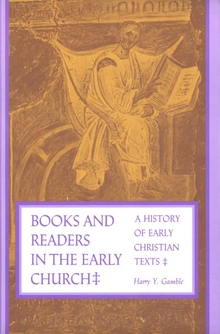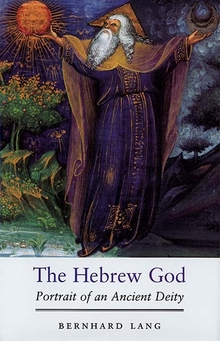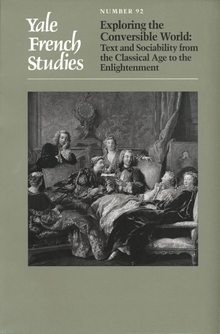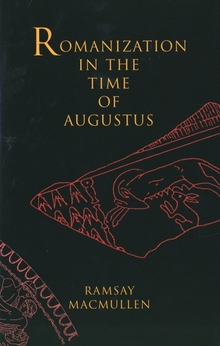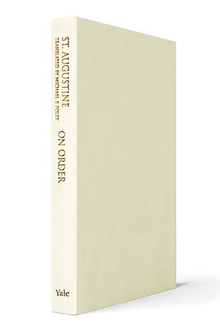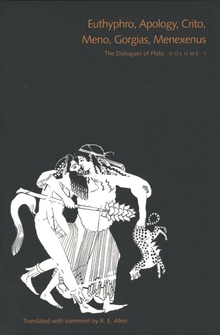Books and Readers in the Early Church
WARNING
You are viewing an older version of the Yalebooks website. Please visit out new website with more updated information and a better user experience: https://www.yalebooks.com
A History of Early Christian Texts
Harry Y. Gamble
Harry Y. Gamble interweaves practical and technological dimensions of the production and use of early Christian books with the social and institutional history of the period. Drawing on evidence from papyrology, codicology, textual criticism, and early church history, as well as on knowledge about the bibliographical practices that characterized Jewish and Greco-Roman culture, he offers a new perspective on the role of books in the first five centuries of the early church.
"This is an impressive piece of work. . . . Among the book's many merits is its cross-disciplinary character, and scholars of antiquity across many disciplines will consult with profit Gamble's substantial contribution to a clearer understanding of early Christianity."—Micheal W. Holmes, Journal of the American Oriental Society
"For the bibliophile, Gamble's journey into the bookish culture of the first 500 years A.D. is nothing less than fascinating. . . . Though not written in a popular style, Books and Readers in the Early Church is an eminently readable work of scholarship and a major contribution to bibliography. Gamble has amply demonstrated that the culture of the book has played an incalculable role in the birth of Christianity and in keeping alive from century to century the story of an obscure birth that changed the world."—David Lindsey, Austin American-Statesman
"This is a clear, informative, and interesting study. Historians of the Middle Ages will find the background for medieval developments highly interesting, but students of early Christian texts will find this to be an invaluable handbook. This is especially so, given the focus here on what has long been neglected."—Susan P. Millinger, The Historian
"This is scholarship at its best, and Gamble is particularly to be commended for resisting the recent tendency among specialists toward disciplinary isolationism. . . . The result is a work that benefits students and scholars in a variety of disciplines. . . . An outstanding book."—S. Craig Churchill, Libraries and Culture
"A work of great importance. . . . Gamble raises so many important issues and then proceeds to give such reasoned, insightful answers to his own questions that it is no exaggeration to say that everyone who deals with early Christian literature in the future will have to contend with this book, which will undoubtedly become a standard in both the classroom and the study for years to come. Gamble is to be commended for his efforts."—SPIonic
"The high standard of scholarship which we have come to expect from Harry Y. Gamble . . . is equaled or excelled in this fascinating book. . . . Much valuable information is assembled that will help those in the fields of New Testament and the early church, library science, ancient history, and especially social history. . . . Gamble makes a notable contribution to the study of early Christianity in its context. . . . The breadth of subjects and richness of details he presents should commend this book to both the specialist and the general reader."—Peter R. Rodgers, Novum Testamentum
"This is a clear, informative, and interesting study. Historians of the Middle Ages will find the background for medieval developments highly interesting, but students of early Christian texts will find this to be an invaluable handbook."—Susan P. Millinger, The Historian
"A study that will be of great interest to all devotees of ancient literature in general, and to scholars of early Christian texts in particular. . . . Gamble's book is thoroughly researched, fully documented, and carefully illustrated. It is well written, and provides useful information and new perspectives on ancient literature for classical and Christian scholars alike."—Charles M. Odahl, Ancient World
"This is an impressive piece of work. . . . Among the book's many merits is its cross-disciplinary character, and scholars of antiquity across many disciplines will consult with profit Gamble's substantial contribution to a clearer understanding of early Christianity."—Michael W. Holmes, Journal of the American Oriental Society
"Gamble has produced a fascinating study of the production, reception, transmission, and use of early Christian literature in a concrete, practical, and physical sense. This very informative study should be required reading for students of antiquity in general and early Christianity in particular."—Adela Yarbro Collins, Journal of the American Academy of Religion
"This work will prove useful for a long time. Gamble has researched widely, presented his results clearly and largely avoids speculation. . . . Scholars and students will owe him a debt for the wealth of factual material he has made accessible."—Carl Bridges, NEASB
"[T]his investigation illuminates the degree to which early Christianity may be considered a religion of the book."—Washington Post Book World
"Strikingly important. . . . It marks an epoch in textural criticism."—J. Enoch Powell, Daily Telegraph
"This is a finely crafted analysis displaying a highly sensitive use of the evidence. A vast array of topics is handled and coordinated with skill and judgment. There are numerous useful correctives to earlier approaches and many innovative hypotheses. The work is outstanding in asking and elaborating fundamental questions with exceptional pointedness and clarity; in bringing to bear relevant data from diverse sources for formulating answers as far as the evidence will allow; and in presenting a coherent picture of books and readers in their historical context."—Stuart R. Pickering, Journal of Religious History
"An important and interesting book that provides the most extensive and coherent treatment we have of how ancient Christians produced and circulated books and developed libraries."—Abraham J. Malherbe, Yale University
"This volume has moved discussions forward by looking at queries seldom broached and offering a new perspective on old ones. such is quality scholarship."—Frederick W. Norris, Church History
"Scholarly work just doesn't get any better than this. . . . This well-thought-out book will reward attentive study. It will be useful both as a teacher's reference and as a student's classroom text and will be of particular interest to librarians, archivists, and historians of religion."—Library Journal
"Congratulations to G. for one of the most original books on early Christianity in recent years. Useful to both scholar and graduate student, it should be in both private and institutional libraries."—Joseph F. Kelly, Theological Studies
"In this extremely well-written and thoroughly researched work, Gamble asks to what extent the early church used books, how were they produced, and for what audiences? . . . An enormously instructive and provocative work on an original topic. I recommend it highly to anyone with an interest in Christian history and a taste for future-oriented speculation."—Commonweal
"[Gamble's] study merits careful reading and continuing use because of its valuable collections, insightful comments, and thoroughness. In essence he has provided a ‘companion to early Christian literature’ which should be required reading."—Robert M. Grant, Catholic Historical Review
"A crucial book for anyone interested in literacy in early Christianity, the formation of the canon, and the place of the book in the development of doctrine and liturgy."—Fred W. Burnett, Religious Studies Review
"This is an extremely interesting book with answers to very practical questions people ask. Gamble knows well how to tell the story in a way that is compelling and satisfying."—Choice
"The book's value [lies] . . . in the meticulous gathering of the results of hitherto disparate branches of classical scholarship into one place for students of the New Testament and patristic literature. Gamble has done this extremely well, performing an important service."—Timothy M. Teeter, Vigiliae Christianae
"It is not easy to write a book that is both fresh and cogent on the New Testament and early Christian literature. Harry Gamble has done it. . . . In addition to a command of his subject, Gamble is blessed with a scholarly temperament that resists overstatement and antitheses in favor of balance and continuity. Although comparatively short, this is a rich book. . . . Gamble and his publisher . . . deserve commendation for giving us a book that is a pleasure to read, with full and informative notes and illustrations well chosen and conveniently placed."—Joseph W. Trigg, Journal of Religion
"Harry Y. Gamble provides a full and richly documented discussion of the production, publication, transcription, dissemination, collection, and use of Christian literature during the first five centuries of the church, all within the context of the broader Greco-Roman environment from which this literature emerged. There is nothing like the study available."—Bart D. Ehrman, University of North Carolina Chapel Hill (American Historical Review)
"An excellent resource . . . [and] invaluable wealth of information."—Ruth-Anne Reese, Journal for the Study of the New Testament
Publication Date: September 23, 1997

